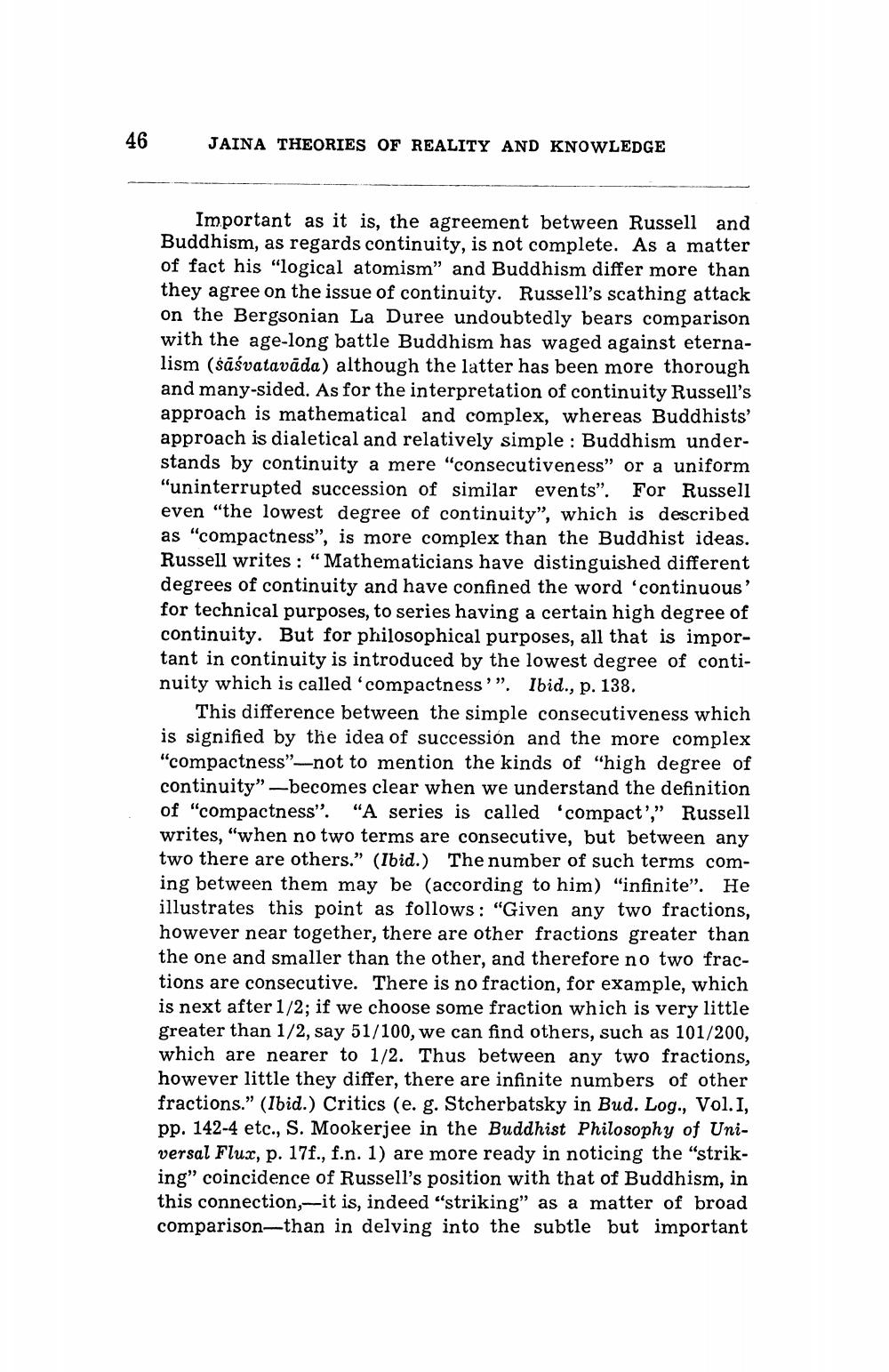________________
JAINA THEORIES OF REALITY AND KNOWLEDGE
Important as it is, the agreement between Russell and Buddhism, as regards continuity, is not complete. As a matter of fact his "logical atomism” and Buddhism differ more than they agree on the issue of continuity. Russell's scathing attack on the Bergsonian La Duree undoubtedly bears comparison with the age-long battle Buddhism has waged against eternalism (śāśvatavāda) although the latter has been more thorough and many-sided. As for the interpretation of continuity Russell's approach is mathematical and complex, whereas Buddhists' approach is dialetical and relatively simple : Buddhism understands by continuity a mere "consecutiveness" or a uniform "uninterrupted succession of similar events". For Russell even “the lowest degree of continuity", which is described as "compactness", is more complex than the Buddhist ideas. Russell writes : “Mathematicians have distinguished different degrees of continuity and have confined the word 'continuous' for technical purposes, to series having a certain high degree of continuity. But for philosophical purposes, all that is important in continuity is introduced by the lowest degree of continuity which is called 'compactness'". Ibid., p. 138.
This difference between the simple consecutiveness which is signified by the idea of succession and the more complex "compactness"-not to mention the kinds of "high degree of continuity"-becomes clear when we understand the definition of "compactness". "A series is called 'compact'," Russell writes, "when no two terms are consecutive, but between any two there are others.” (Ibid.) The number of such terms coming between them may be (according to him) "infinite”. He illustrates this point as follows: "Given any two fractions, however near together, there are other fractions greater than the one and smaller than the other, and therefore no two fractions are consecutive. There is no fraction, for example, which is next after 1/2; if we choose some fraction which is very little greater than 1/2, say 51/100, we can find others, such as 101/200, which are nearer to 1/2. Thus between any two fractions, however little they differ, there are infinite numbers of other fractions." (Ibid.) Critics (e. g. Stcherbatsky in Bud. Log., Vol.I, pp. 142-4 etc., S. Mookerjee in the Buddhist Philosophy of Universal Flux, p. 17f., f.n. 1) are more ready in noticing the "striking" coincidence of Russell's position with that of Buddhism, in this connection,-it is, indeed "striking” as a matter of broad comparison—than in delving into the subtle but important




